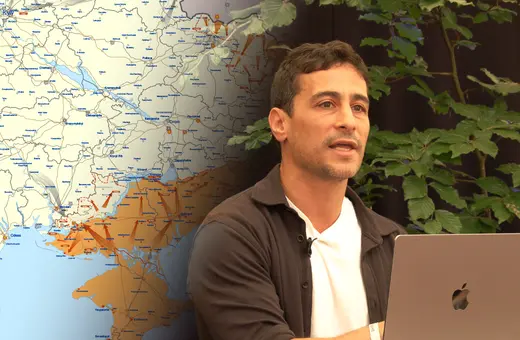Most people who went to Hay-on-Wye to the 2015 HowTheLightGetsIn festival will have used a road map to get there. It’s an accurate and useful tool for navigation, but it’s full of mis-representations. The map is accurately ‘to scale’ – so it’s possible, for example, to estimate the distance to Hereford. But there are anomalies – the roads on the map are far too wide, and the representative symbols are of course absent on the ground. This commonplace map is helpful and accurate in many useful ways, but we imposed onto the map our vision of the structure of the landscape and its contents that are simply not there, which is not to say that they are not useful.
Maps of the universe share similar qualities. When William and Caroline Herschel made their first maps of the Milky Way they were unaware of the presence of obscuring dust in the galaxy’s plane. They based their map on the rough proposition that the bright stars all have the same intrinsic brightness so when they found fewer bright stars in the direction of the Milky Way, and even fewer in the direction of the galactic centre, they concluded that it extended less far in those directions – the opposite of what we now believe. However the Herschel’s map correctly revealed a highly flattened figure for the Milky Way.
On a larger scale, Hubble discovered the expanding universe by noticing that, contrary to the expectations of a static universe, the vast majority of galaxies had redshifted spectra. Lemaitre and others realised that this signalled that space-time was expanding and made the inference that it started in what we now call a Big Bang. However, Hubble’s estimates of the distances to galaxies were seriously in error because he mistook variable stars he identified in distant galaxies for the stars of known brightness he’d identified in local star clusters (the Cepheid variables). This error meant that the rate of expansion that Hubble calculated was about seven times greater than the contemporary value. Hubble’s contribution was nevertheless revolutionary – he and his contemporary cosmologists had assigned the static map of the universe to the waste bin. His flawed map was a significant step in refining our physical model of the universe.
Today we make three-dimensional maps of the universe by plotting the position of galaxies on the sky at the distance inferred by assuming a uniformly expanding universe. These maps have revealed the dramatic structures that gravity has created over the age of the universe – the so-called large-scale structure. We see galaxies populating the sheets and filaments of the cosmic web with dense clusters of galaxies at their intersections and the almost empty voids between them. These beautiful maps are the result of years of effort by vast teams of scientists and engineers.
The 2dF Redshift Survey used the two-degree field spectroscopic facility on the Anglo-Australian Telescope to measure the redshifts of approximately 220,000 galaxies from 1995 to 2002. This advanced the state our knowledge of the large-scale structure by an order of magnitude in survey size, permitting a wide range of fundamental advances in cosmology.
These are maps of the universe in that they show us the location of luminous galaxies, but they represent only a small fraction of the mass in the universe. More complete maps might show us the atoms and molecules between the stars, the X-ray-emitting gas between galaxies and, of course, the enigmatic dark matter that accounts for several times the visible mass.















Join the conversation